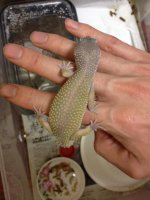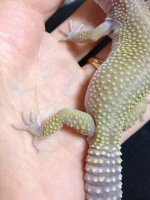ChaoFan
New member


Hello all,
the two pictures above have been taken around 30 min from each other. the light condition is a bit different, however it is clearly visible the double coloration in the first picture, disappeared later on to the normal coloration of a juvenile bb.
i noticed this three times already in the last 3-4 weeks (always between late afternoon and evening time). and i anyway have the feeling that coloration in the morning is generally different (lighter) than in the evening.
is this a normal behaviour? what is driving the change in coloration?
Thanks, hope I'm posting this in the right place.
Michele





